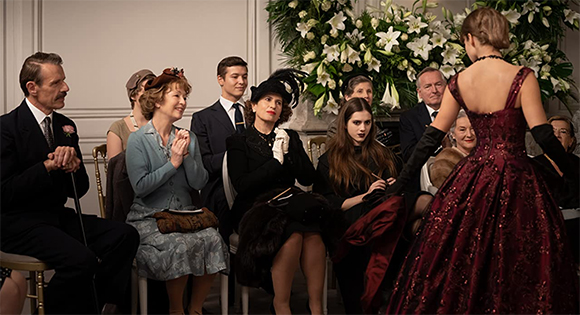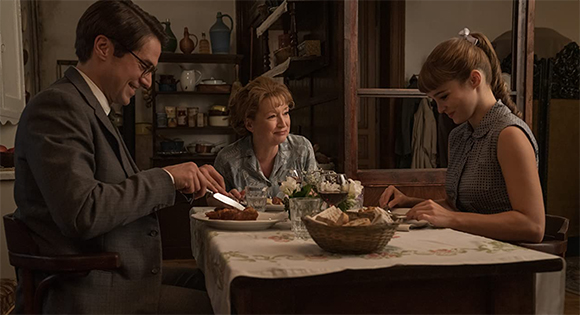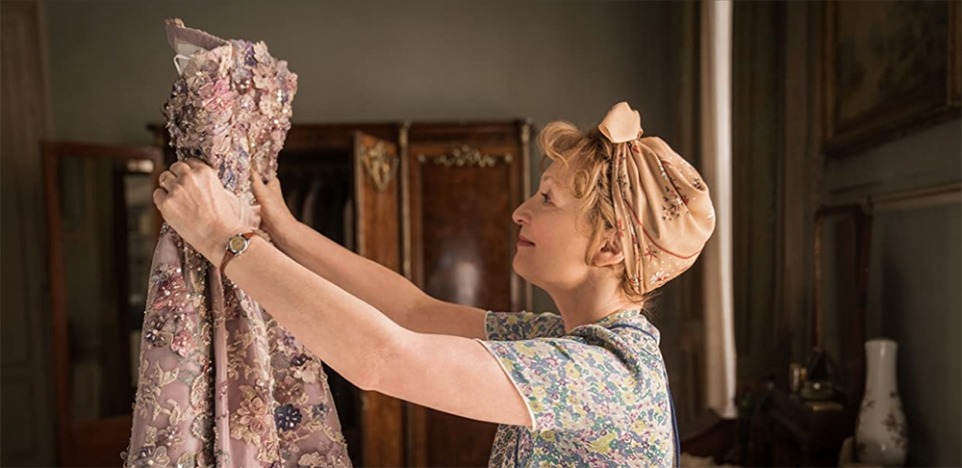Clothing is our most intimate environment.
— Susan W. Watkins
Every day we make choices about what to wear. Our clothes communicate to the world information about our age, sex, and class. They reflect our mood, personality, origin, occupation, tastes, and erotic yearnings. They indicate whether we are comfortable conforming to societal standards. Clothing creates community, signaling that we belong to a particular group. In turn, it can create borders and boundaries between people.
To change clothes can be an important way to change one’s way of being in the world. Clothing doesn’t just shape identity. It reveals our identity to the people we meet. We all get dressed, but how often do we think about what our clothes say?
Mrs. Harris Goes to Paris is a comedy-drama directed and produced by Anthony Fabian. He wrote the screenplay with Carroll Cartwright, Keith Thompson, and Olivia Hetreed based on the 1958 novel by Paul Gallico. The story encourages us to reflect on what our clothes mean to us.

The story is set in the mid-1950s in London. Mrs. Ada Harris (Lesley Manville) is a cleaning lady whose husband did not come back from World War II. One day she sees a haute couture Christian Dior gown at one of her client’s. Enchanted by its beauty, she makes the bold decision to travel to Paris to purchase her own Dior dress. But first she needs to raise 500 pounds! She takes on extra hours and tries her luck at the races. Then to her surprise she receives a war widow’s pension going back many years. Mrs. Harris goes to Paris.
Through several fortunate happenings, she gets into the headquarters of Christian Dior and then is invited to join a gentleman (Lambert Wilson) at the showing of Dior’s anniversary collection. Her enthusiasm, kind nature, and humble charm help her connect with Andre (Lucas Bravo), the Dior accountant, and Natasha (Alba Baptista), a Dior model. But Claudine (Isabelle Huppert), the Dior director, does not want their brand associated with someone of her class. Nevertheless, Ada picks out a dress and stays on in Paris for the personal fittings.
This working-class woman’s exploration of clothing leads her into a confrontation with the fashion industry, consumer society, and the ways in which our wardrobes can lead to golden prisons of wealth and privilege. And although her dress is very beautiful, what those around her notice the most is her inner beauty.

GOING DEEPER
For your further exploration of the themes of Mrs. Harris Goes to Paris, we encourage you to read our review of Michele Saracino’s book Clothing, which is part of the Fortress series “Compass Christian Explorations of Daily Living” edited by David Jensen. Here are some suggestions for accessing the film’s meaning adapted from the book’s Reader’s Guide:
1. Keep a clothing journal for a week annotating your positive and negative emotions about what you choose to wear.
2. How did you learn what appropriate dress is? Have your views changed over the years?
3. How does your dress illustrate the story of your life?
4. What values have influenced your discernment of what is masculine and feminine clothing?
5. Discuss your views on the use and treatment of animals in the creation of clothes.
6. Have you ever been given “hand me down” clothes? What was your response to them?
7. What are your feelings about designer labels, i.e. the role of fashion-taste-makers?
8. What is your view of safety in terms of dress?
9. List some of the clothing trends which are now dominant in your culture.
